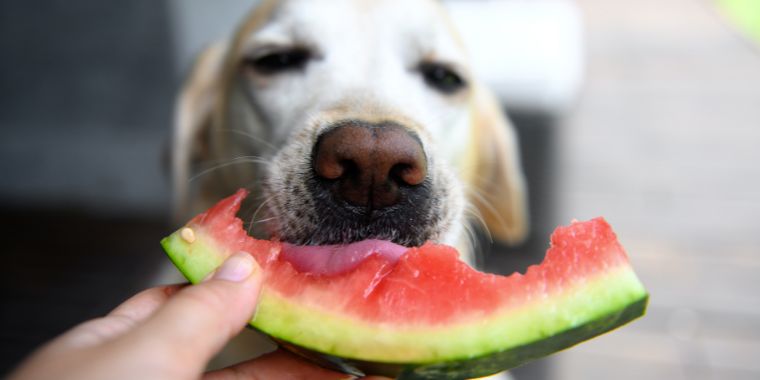Are you considering switching your furry friend to a raw dog food diet? If so, it’s important to understand the role that fruits and vegetables play in this nutritious plan. In this post you’ll discover the do’s and don’ts of incorporating these natural ingredients into your dog’s meals. From the benefits of nutrient-rich fruits to the potential pitfalls of certain vegetables, this guide will provide the valuable insights you need to ensure your pup gets the most out of their raw food diet. So, let’s dive in and explore the fascinating world of fruits and vegetables in a raw dog food diet together!

Choosing Fruits and Vegetables for a Raw Dog Food Diet
The Importance of Including Fruits and Vegetables
When it comes to feeding your furry friend a raw dog food diet, it is crucial to include a variety of fruits and vegetables. While meat forms the foundation of a raw dog food diet, fruits and vegetables add important nutrients, vitamins, and minerals to your pet’s meals. These plant-based foods provide essential fiber, antioxidants, and phytonutrients that contribute to your dog’s overall health and well-being.
Understanding Nutritional Needs
Before diving into the world of fruits and vegetables for your dog, it is essential to understand their nutritional needs. Dogs are omnivores, which means they are designed to consume both meat and plant-based foods. While their primary dietary requirement is animal protein, they also benefit from a range of fruits and vegetables to meet their nutritional needs.
Safe and Unsafe Fruits and Vegetables for Dogs
While many fruits and vegetables are safe for dogs to consume, it is important to be aware of those that can be harmful. Some varieties, such as grapes, raisins, onions, garlic, avocado, tomatoes, and mushrooms, can be toxic to dogs and should be avoided. However, there are plenty of safe and beneficial options available that we will explore in this guide.
Preparing Fruits and Vegetables for Dogs
Washing and Cleaning
Before including fruits and vegetables in your dog’s diet, ensure that you thoroughly wash and clean them. This step helps remove any dirt, chemicals, or potential bacteria that may be present on the surface. It is particularly important if you are using conventionally grown produce, as they may have been treated with pesticides or other chemicals.
Peeling and Removing Seeds
To make fruits and vegetables safer for your dog to eat, it is recommended to peel them and remove any seeds or pits. For example, apples should be cored, and the skin should be removed. Similarly, watermelons should have the seeds removed before serving. By taking these precautions, you can prevent any potential choking hazards or digestive issues in your furry companion.
Chopping and Cutting into Bite-sized Pieces
To make it easier for your dog to eat and digest, be sure to chop and cut fruits and vegetables into bite-sized pieces. This ensures that they can comfortably consume their nutritious meals without any difficulty. Additionally, smaller pieces also make it easier to monitor your dog’s portion sizes and prevent overeating.

Popular Fruits for Dogs
Apples
Apples are a favorite among many dogs. They are low in calories and high in fiber, promoting digestive health. Additionally, apples are rich in vitamin C, which supports a strong immune system for your furry friend.
Bananas
Bananas are a tasty and nutritious treat for dogs. They provide potassium, which helps with proper muscle and nerve function. Bananas also contain natural sugars, making them an excellent energy source.
Blueberries
Blueberries are packed with antioxidants, which contribute to your dog’s overall health and well-being. These delicious berries can support brain health, reduce inflammation, and improve cognitive function in dogs.
Watermelon
Watermelon is a refreshing fruit that can help keep your dog hydrated, especially during hot summer months. It is also rich in vitamin A, which promotes healthy skin, coat, and immune system.
Pineapple
Pineapple contains an enzyme called bromelain, which aids in digestion and can help improve joint health. This tropical fruit is also a good source of vitamin C, manganese, and fiber, making it a healthy addition to your dog’s diet.
Benefits and Nutritional Value of Popular Fruits
Apples: High Fiber and Vitamin C
Apples are a fantastic source of fiber, promoting good digestive health for dogs. The skin of an apple also contains antioxidants that can help reduce the risk of chronic diseases. Additionally, apples are packed with vitamin C, which supports a strong immune system.
Bananas: Potassium and Digestive Aid
Bananas are not only delicious but also rich in potassium, which is essential for maintaining proper muscle and nerve function in dogs. They are also a natural digestive aid, thanks to their high fiber content.
Blueberries: Antioxidants and Brain Health
Blueberries are a superfood for both humans and dogs. These small fruits are full of antioxidants, which help fight free radicals in the body and promote overall health. They also support brain health and can improve cognitive function in dogs.
Watermelon: Hydration and Vitamin A
Watermelon is a hydrating fruit that can be a great snack for dogs, especially during warm weather. It contains high water content, helping your furry friend stay hydrated. Watermelon also provides vitamin A, which is essential for maintaining healthy skin, coat, and immune system.
Pineapple: Bromelain and Joint Health
One of the key benefits of pineapple is its bromelain content. Bromelain is an enzyme that aids digestion, making it easier for dogs to absorb nutrients from their food. Additionally, bromelain has anti-inflammatory properties and can help improve joint health in dogs.

Preparing and Serving Popular Fruits to Dogs
Choosing Ripe Fruits
When preparing fruits for your dog, ensure you choose ripe fruits that are at their peak of freshness. Ripe fruits are easier to digest and offer the best flavor and nutritional value for your furry friend.
Removing Seeds and Pit
Before serving fruits like apples and watermelon to your dog, make sure to remove any seeds or pits. These can pose choking hazards or cause digestive issues in dogs.
Serving Fresh or Frozen
Fruits can be served fresh or frozen to provide a refreshing treat for your dog. Frozen fruits are especially enjoyable during hot weather and can serve as a tasty and cooling snack.
Mashing or Pureeing for Picky Eaters
If your dog is a picky eater or has difficulty chewing, you can mash or puree fruits to make them more appealing. This can be especially helpful for older dogs or those with dental issues.
Popular Vegetables for Dogs
Carrots
Carrots are a crunchy and nutritious vegetable that dogs love. They are high in beta-carotene, which converts into vitamin A and promotes healthy vision. Chewing on carrots can also help promote dental health in dogs.
Spinach
Spinach is a nutrient-dense green leafy vegetable that offers a range of vitamins and minerals. It is particularly rich in iron, which is vital for maintaining healthy blood cells and energy levels in dogs.
Broccoli
Broccoli is a nutritional powerhouse for dogs. It contains vitamins C and K, as well as fiber and antioxidants. Broccoli also promotes a healthy digestive system and can support the immune system.
Cucumbers
Cucumbers are a hydrating vegetable that can help keep your dog’s body cool and refreshed. They are low in calories and a great source of hydration, making them an excellent choice for dogs on a diet.
Sweet Potatoes
Sweet potatoes are an excellent source of fiber and vitamin A for dogs. They promote a healthy digestive system and support good vision. Sweet potatoes are also a great option for dogs with food allergies or sensitivities.
Benefits and Nutritional Value of Popular Vegetables
Carrots: Beta-Carotene and Dental Health
Carrots are rich in beta-carotene, a precursor to vitamin A, which supports good vision and overall eye health in dogs. Chewing on carrots can also help scrape away plaque and tartar from your dog’s teeth, promoting better dental health.
Spinach: Iron and Nutrient-dense
Spinach is packed with essential nutrients, including iron, which helps support healthy blood cells and energy levels in dogs. It also contains vitamins A, C, and K, along with folate and calcium, contributing to your dog’s overall health.
Broccoli: Vitamins C and K
Broccoli is a fantastic source of vitamins C and K, which are beneficial for dogs. Vitamin C acts as an antioxidant, supporting a strong immune system, while vitamin K promotes healthy blood clotting.
Cucumbers: Hydration and Low in Calories
Cucumbers are low in calories and high in water content, making them an ideal choice for dogs on a calorie-restricted diet. They can help keep your dog hydrated, especially during hot weather, and provide a satisfying crunch.
Sweet Potatoes: Fiber and Vitamin A
Sweet potatoes are a great source of fiber, which promotes a healthy digestive system in dogs. They are also packed with vitamin A, supporting good vision and overall eye health.
Preparing and Serving Popular Vegetables to Dogs
Cooking or Serving Raw
Vegetables can be served to dogs both cooked and raw, depending on their preference and digestive tolerance. Some dogs may prefer cooked vegetables, while others may enjoy the crunch and texture of raw ones. It’s important to experiment and see what works best for your furry friend.
Steaming or Blending for Better Digestion
Steaming vegetables can make them easier to digest for dogs, especially those with sensitive stomachs. Additionally, you can blend or puree vegetables to create a smooth texture, making it more palatable for your furry companion.
Avoiding Seasonings and Salts
When preparing vegetables for your dog, it is crucial to avoid adding any seasonings or salts. Dogs have different dietary needs and can be sensitive to certain spices and ingredients. Plain vegetables provide all the nutrients your dog needs without any additional seasonings.
Incorporating into Homemade Raw Meals
Vegetables can be incorporated into homemade raw meals for dogs to add nutritional variety and balance. You can mix them with meat, organs, and bones to create a well-rounded and complete meal for your furry friend.
Introducing Fruits and Vegetables to a Dog’s Diet
Start Slowly and Monitor Digestive Response
When introducing fruits and vegetables to your dog’s diet, it is important to start slowly. Introduce one new fruit or vegetable at a time and observe your dog’s digestive response. This gradual approach allows you to monitor for any allergic reactions or digestive issues.
Gradually Increase Variety and Quantity
Once your dog has adjusted to a new fruit or vegetable, you can gradually increase the variety and quantity. This helps to diversify their diet and ensure they receive a wide range of nutrients from different fruits and vegetables.
Mixing with Commercial Raw Food
If you feed your dog commercial raw food, you can mix in fruits and vegetables to enhance their meals. This allows you to customize your dog’s diet and provide additional nutrients and flavors.
Adjusting Portion Sizes to Maintain Balance
As with any dietary change, it is important to adjust portion sizes accordingly to ensure a balanced diet for your dog. Fruits and vegetables should complement the overall proportions of protein, fat, and carbohydrates in their raw food meals.
Avoiding Toxic Fruits and Vegetables for Dogs
Grapes and Raisins
Grapes and raisins should never be fed to dogs as they can cause kidney failure. Even a small amount can be toxic and lead to serious health complications.
Onions and Garlic
Onions and garlic are part of the allium family and can be toxic to dogs, causing damage to red blood cells. It is important to avoid feeding any form of onion or garlic, including cooked or powdered variants.
Avocado
Avocado contains persin, which can be toxic to dogs in large quantities. While the flesh of the fruit is generally safe, it is best to avoid feeding avocados to dogs due to the potential risks.
Tomatoes and Tomato Plants
Tomatoes and plants from the tomato family, including the leaves and stems, contain a substance called solanine, which can be toxic to dogs. It is advisable to keep tomatoes and tomato plants away from your four-legged companion.
Mushrooms
Many species of mushrooms can be toxic to dogs and can cause a range of symptoms, including gastrointestinal upset, liver damage, and even death. To ensure your dog’s safety, it is best to avoid feeding them any type of mushroom.
By following the do’s and don’ts of including fruits and vegetables in your dog’s raw food diet, you can provide them with a balanced and nutritious meal plan. Remember to consult with your veterinarian for specific dietary recommendations and tailor the diet to your dog’s individual needs. With the proper knowledge and preparation, you can ensure that your loyal companion enjoys the benefits of a varied and wholesome diet.


